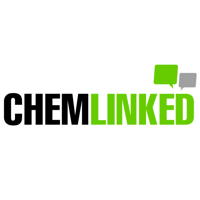On Jan 3, 2020, China State Council finally passed the CSAR during its executive meeting. The final version of the CSAR is expected to be released by the National Medical Products Administration (NMPA) in the following months.
China’s outdated cosmetic regulatory framework has been a major stumbling block stymying innovation and progress. The finalization of CSAR is one of the essential moves for China to align the regulatory system with the current industry practices and with the international markets. The new CSAR will greatly facilitate progress in the sector and a series of supporting rules will be introduced in succession, which represents a new era for China’s cosmetic sector and a very exciting time for international stakeholders.
Significant changes worth noting:
According to our inside information, the final CSAR will offer subtle refinements rather than massive amendments. Therefore stakeholders can take precautions for the upcoming China new cosmetic regulations based on the significant changes in the latest draft version of CSAR.
1. Extension of cosmetic scope
In the latest draft version of CSAR cosmetics has been extended to include teeth and oral mucosa. Oral care products only require compliance with national or industrial standards such as GB 8372-2017 Toothpaste, GB 22115-2008 and GB 29337-2012 instead of registration or filing. Efficacy claims (such as “anti-caries”, “inhibit plaque” and etc.) of these products are permitted to be used provided adequate standard-based evaluation data supports the claims.
Notably, soaps intended solely for cleanliness are outside the scope of this regulation.
2. Adjustment of cosmetic classification
The cosmetic classification is changed from "special use cosmetics” and “non-special use cosmetics" to "special use cosmetics” and “general cosmetics". Under the new regulation, special use cosmetics are subject to registration and will be reduced from the existing 9 to 5 categories and the general cosmetics are defined as all other cosmetics excluded from special use cosmetics. The remaining special cosmetics such as hair growth, hair removal, and breast beauty, slimming and deodorant products are canceled or supervised as drugs or general cosmetics.
Furthermore, the NMPA will formulate the classification rules and coding inventory based on efficacy claim, application part, dosage form and target users.
3. Management of cosmetic new ingredients
Cosmetic ingredients will be regulated based on their risk. Ingredients with high risk shall register with NMPA and obtain approval, while the management of ingredients with low risk is shifted to filing management, requiring enterprises to declare ingredients, prepare materials and conduct risk monitoring themselves.
4. Strengthening of enterprise obligations
The register and filer of cosmetics and cosmetic ingredients take full responsibilities of product safety. For cosmetics they should carry out safety assessment to ensure product safety prior to registration and filing, while for ingredients the registration applicant or the filer shall report the usage and safety information of the new cosmetic ingredients to the NMPA every half a year for 3 years. Only the new ingredient without safety problems before the expiry of 3-year observation period will be included in IECIC.
Stakeholders with filed or registered products are responsible for the recall of substandard cosmetics. Where cosmetic manufacturers or operators have found that the cosmetics are harmful to human health resulting from quality defects and other reasons, they shall immediately inform relevant stakeholders of recall requirements and also aid in the process.
5. Addition of efficacy claims supervision
For now, claims of efficacy are confined to product packaging, with no experimental data or literature to back them up. But in the new regulation, the manufacturer shall take full responsibility for any efficacy claims. Relevant literature, adequate research data or testing report are required and will be exposed to public on NMPA’s website.






















